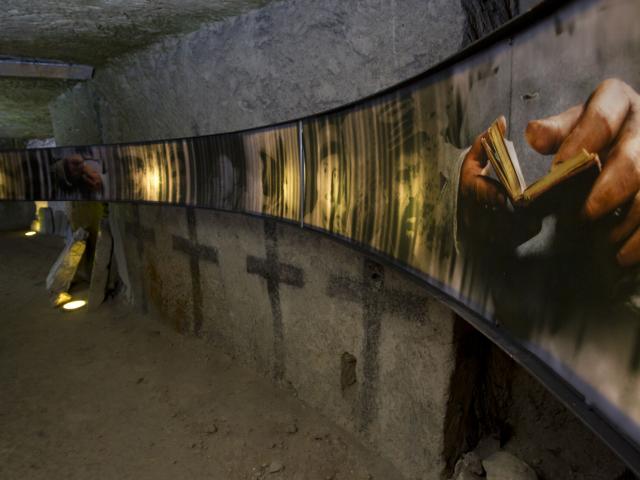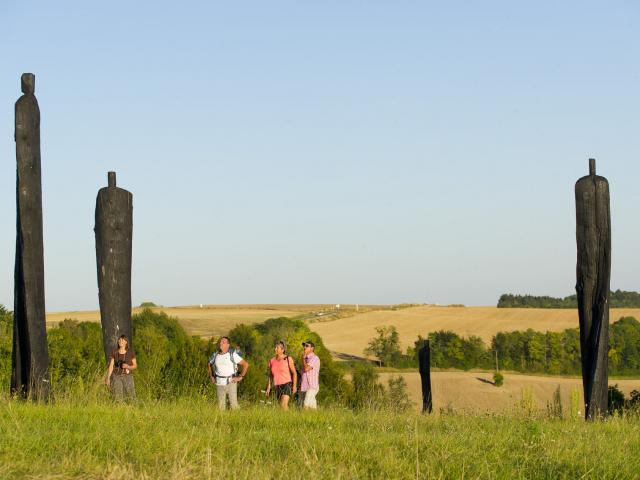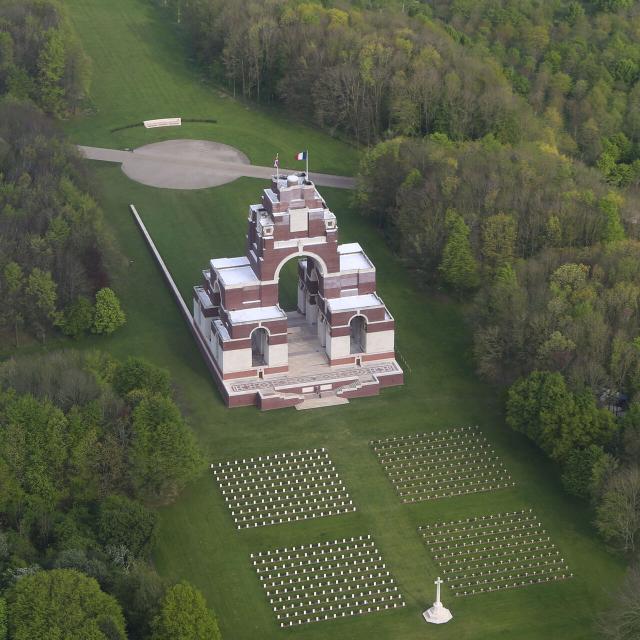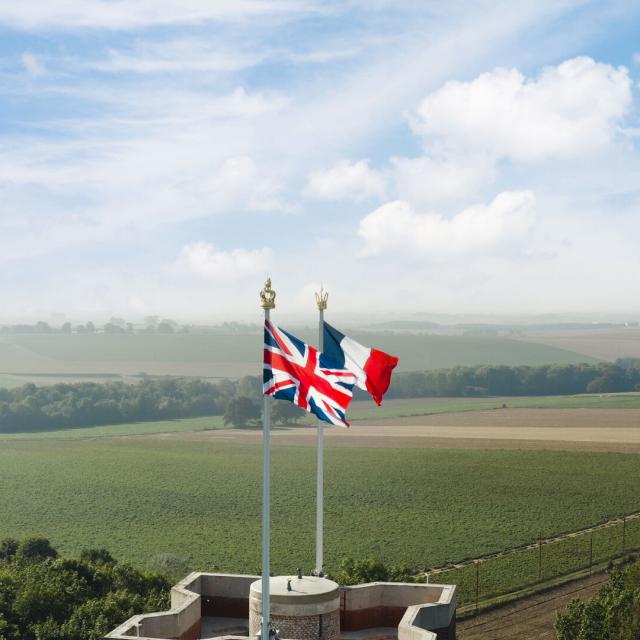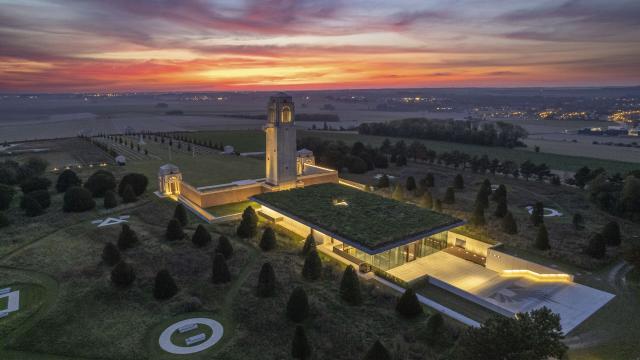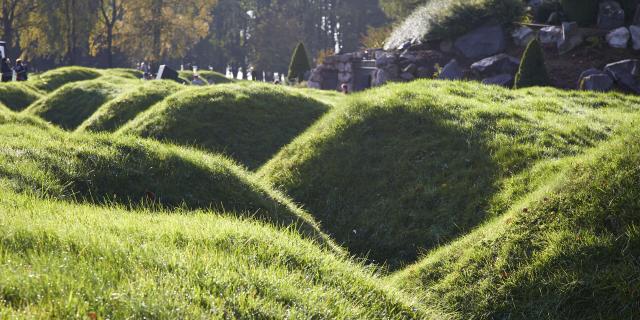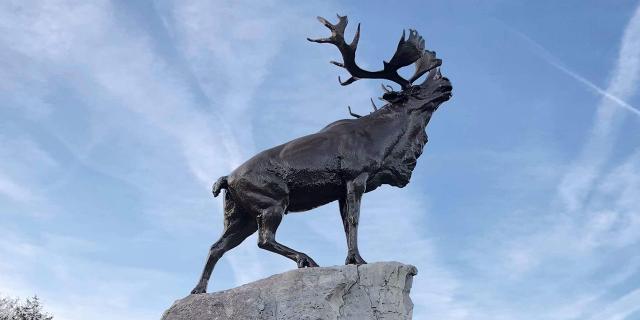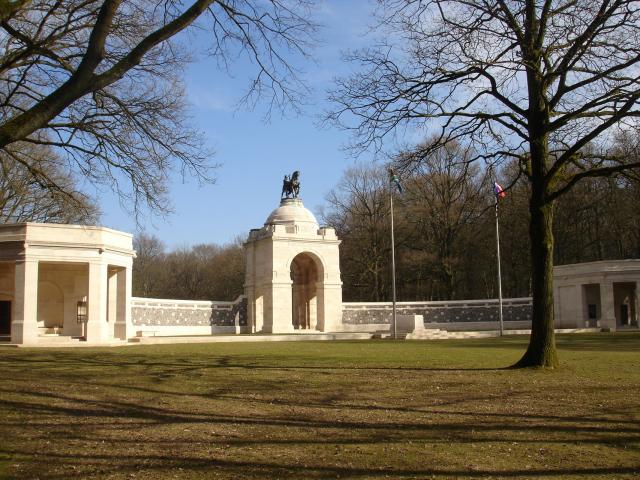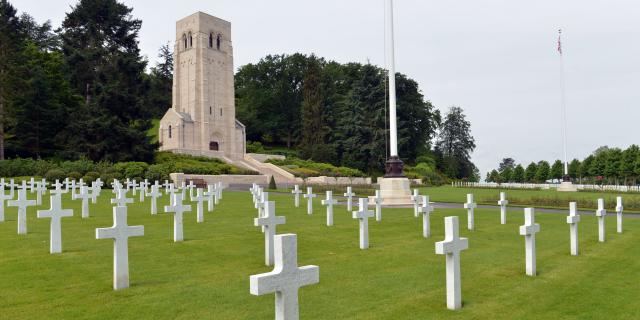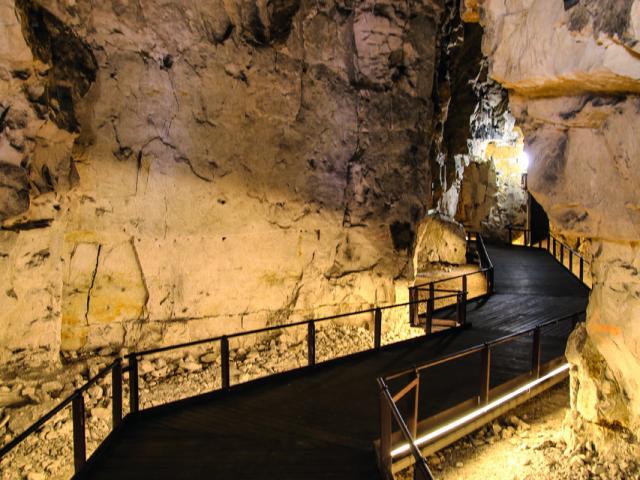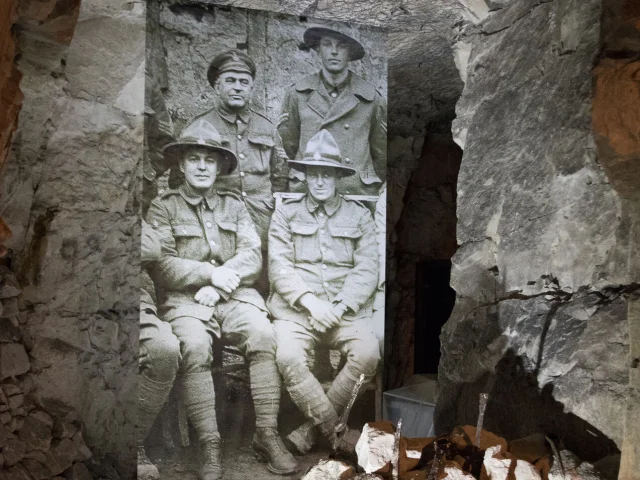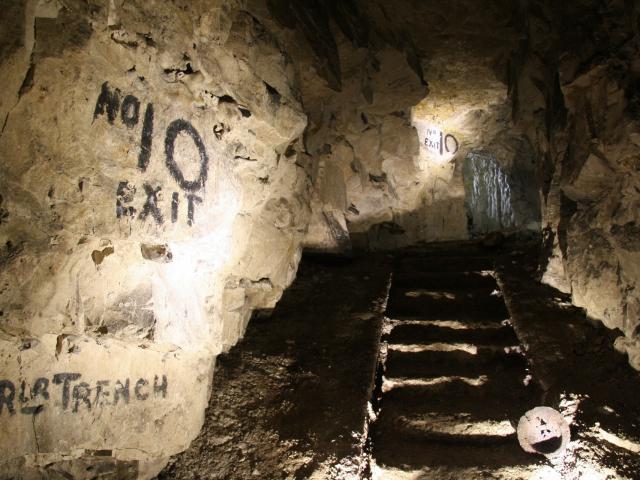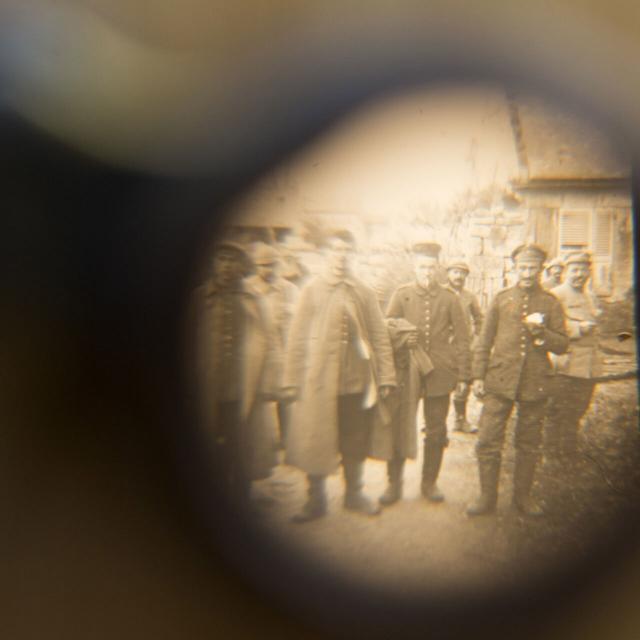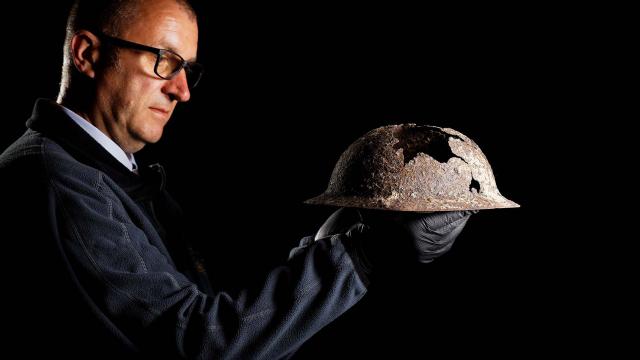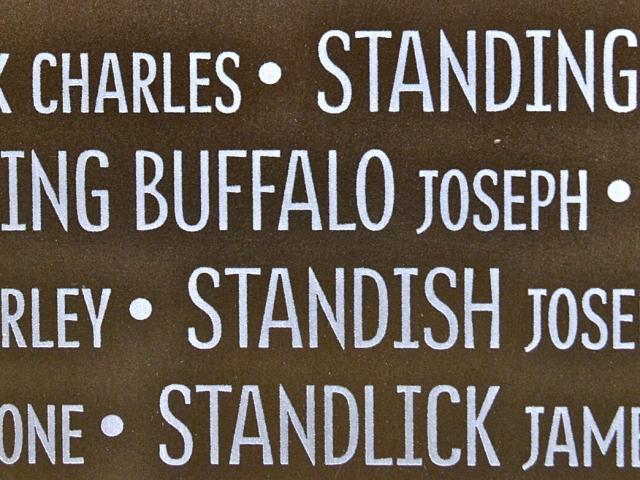Located near chemin des Dames in the Aisne, The World Rugby Memorial is quite unique. Inaugurated on 16 September 2017, “The Ribbons of Memory” is a memorial created by Jean-Pierre-Rives, former captain of the French team. On it, a plaque honouring 2 Scots, 6 English, 44 French as well as members of the French military team, all high-level players, who died on the Chemin des Dames.
Just 1,5 miles away, the museum of the Caverne du Dragon, under the Chemin des Dames is a must-see. Originally, this Dragon’s Cave was a stone quarry. The Germans, who took possession of it in 1915, nicknamed it “Drachenhöle” perhaps because of the seven openings spitting out machine-gun fire. More than a hiding place, the cavern was a strategic location fiercely disputed during the war. The visit tells you about the history of the place and the lives of the soldiers in these caves during WW1.




